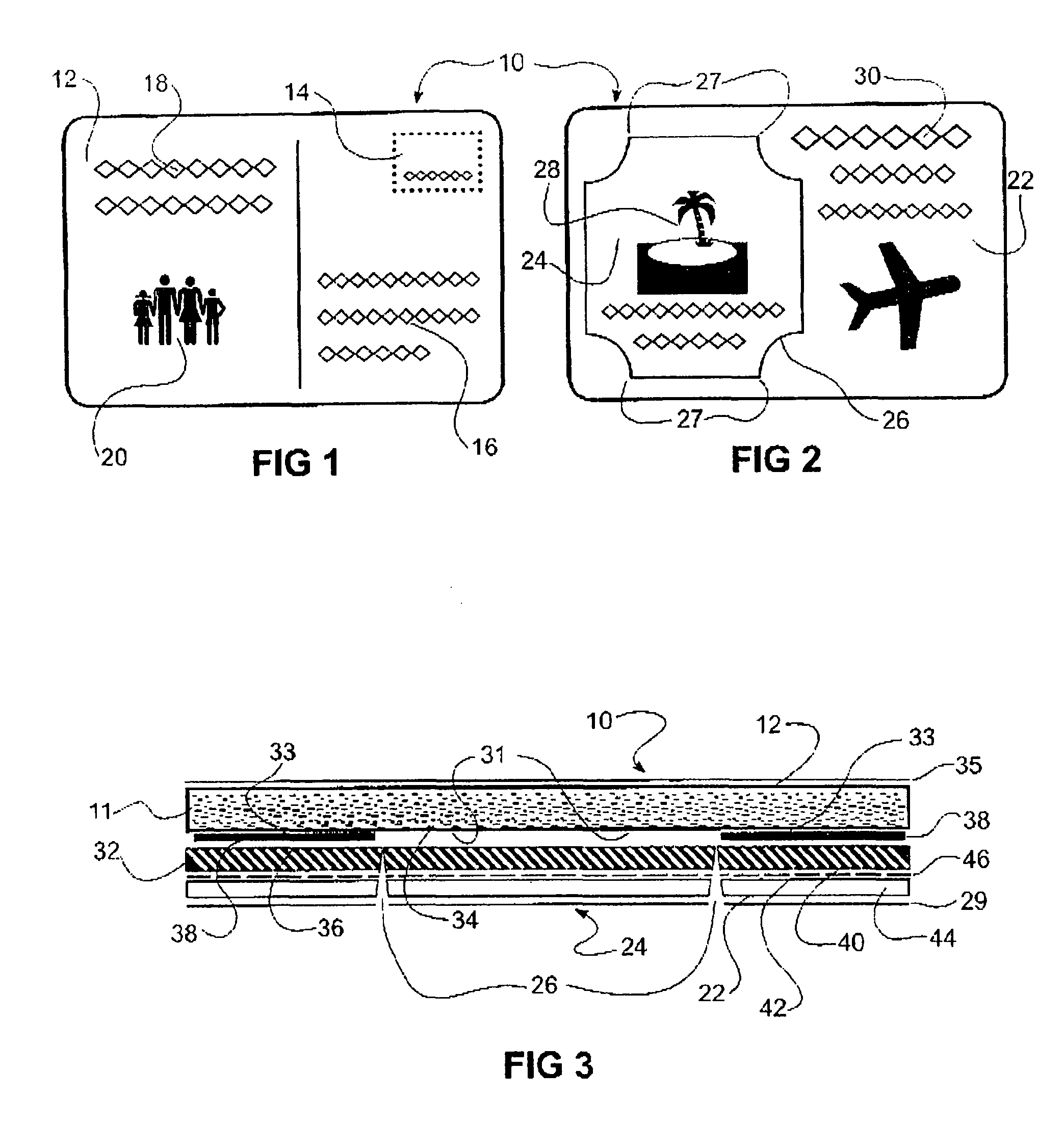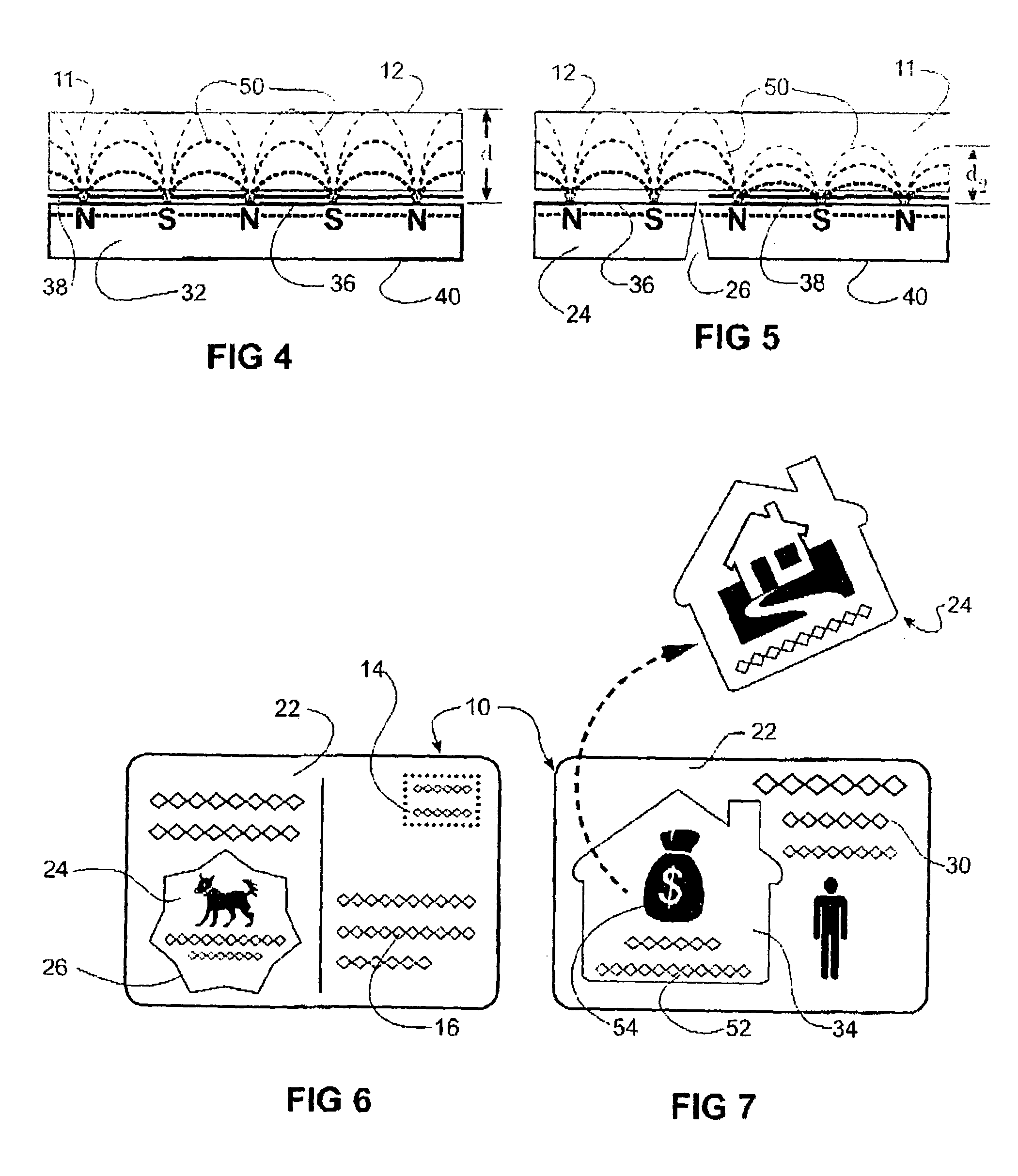Composite magnetic advertising mailing cards
a mailing card and magnet technology, applied in the field of composite cards, can solve the problems of affecting the advertising space taken up by the face of the plain brown magnetic sheet, the difficulty of achieving low-cost mailings with magnets, and the jamming of sorting equipmen
- Summary
- Abstract
- Description
- Claims
- Application Information
AI Technical Summary
Benefits of technology
Problems solved by technology
Method used
Image
Examples
Embodiment Construction
[0066]Thus, the invention provides a new and advantageous advertising card which is suitable for mass mailing to end-users. It is to be understood that the description terminology does not limit the uses of the invention.
[0067]With reference to the drawings in more detail, FIGS. 1 and 2 illustrate the front and back sides, respectively, of a typical use of the invention as a postcard shown generally as 10. Card 10 may be of any shape but is rectangular in the embodiment shown, and has an address face 12 as shown in FIG. 1. Card 10 is partly composed of a planar cardstock 11 (FIG. 3) which may be of any printable material, such as coated or uncoated paper, plastic or a combination of suitable materials. On face 12 of this material 11, conventional postal indicia or stamp 14 and address 16 are placed as well as a variable or an unchanging static text message 18 and a variable image 20 or an unchanging status, if so desired.
[0068]The reverse side of card 10, as shown in FIG. 2, has a f...
PUM
 Login to View More
Login to View More Abstract
Description
Claims
Application Information
 Login to View More
Login to View More - R&D
- Intellectual Property
- Life Sciences
- Materials
- Tech Scout
- Unparalleled Data Quality
- Higher Quality Content
- 60% Fewer Hallucinations
Browse by: Latest US Patents, China's latest patents, Technical Efficacy Thesaurus, Application Domain, Technology Topic, Popular Technical Reports.
© 2025 PatSnap. All rights reserved.Legal|Privacy policy|Modern Slavery Act Transparency Statement|Sitemap|About US| Contact US: help@patsnap.com



